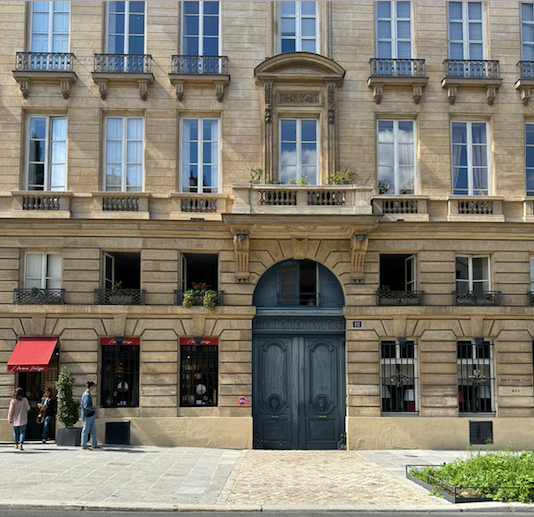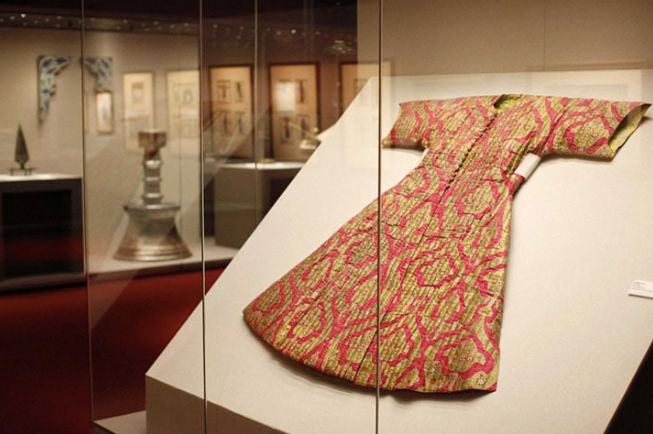
LES PORTES DE PARIS - THE DOORS OF PARIS

Thomas & Michou
The Timeless Elegance of Parisian Front Doors: A Window into the Soul of Paris
Welcome to our ONLINE STORE and blog.
As a barware, lighting and home accessories design company, at Thomas Fuchs Creative we specialize in handmade goods.
Every week we give you a behind the scenes look at the people, places and things that inspire us.
We are just back from Paris Design Week and while there walking from meeting to meeting we were so inspired by something we see each time in Paris which are the doors to all the buildings. Each door is an entry into history, design and colour.
Paris is a city known for its architecture, art, and history, and one of the most charming yet often overlooked elements is its front doors. As you stroll through the streets of the French capital, you'll notice that the doors of Parisian homes are not just mere entrances, but works of art in their own right. The architecture of Parisian front doors reveals a great deal about the city's history, its diverse architectural styles, and the timeless allure of its neighborhoods.
A Journey Through Parisian History
Parisian doors reflect the evolution of architectural styles in the city. From the medieval streets of Le Marais to the grand Haussmannian boulevards, each door tells a unique story.

Medieval Doors in Le Marais: In one of the oldest parts of Paris, you'll find wooden doors dating back to the 15th and 16th centuries, often featuring intricate carvings and wrought-iron details. These heavy, imposing doors were built to secure homes in an era when fortification was paramount. Their sturdy appearance, with iron studs and sometimes even small windows with iron grilles, conveys the sense of protection needed at the time.

Renaissance and Baroque Influences: Moving forward in time, the Renaissance and Baroque periods brought more decorative elements to Parisian doors. These doors often featured detailed pediments, stonework around the frames, and sometimes even bas-relief sculptures. The influence of Italian architecture became prominent during the Renaissance, and many Parisian homes incorporated this grandeur into their entrances, with curved lines, archways, and symmetrically aligned decorations.

Haussmannian Doors: Perhaps the most iconic doors in Paris belong to the Haussmannian buildings, designed by Baron Haussmann during the massive urban renovation of Paris in the mid-19th century. These doors are grand, symmetrical, and elegant, usually framed by large stone facades. They are often double doors with large brass handles, intricate ironwork, and glass panels. The symmetry and proportion reflect the neoclassical aesthetic that Haussmann introduced throughout Paris, focusing on elegance and urban coherence.
Art Nouveau Flourishes: At the turn of the 20th century, the Art Nouveau movement brought a wave of creativity and fluidity to Parisian door design. Art Nouveau doors are instantly recognizable for their organic shapes, flowing lines, and natural motifs. You'll often find doors adorned with floral patterns, vines, and elaborate glasswork. Architects like Hector Guimard, who designed the iconic Paris Métro entrances, also left their mark on the city's residential doors. These pieces often resemble the very essence of Paris: romantic, artistic, and avant-garde.
Materials and Craftsmanship
Parisian doors are constructed from a variety of materials, with each contributing to the unique aesthetic of the city’s streets. The use of wood, often oak or walnut, is predominant in older doors, which are frequently painted in rich shades of green, blue, or red. The paint provides not only visual interest but also protection against the elements, while the occasional signs of wear add to the sense of history.

Wrought Iron Grill
Wrought iron is another hallmark of Parisian door design, with many doors featuring iron grills and decorative metalwork. These iron details, often hand-forged by craftsmen, are a testament to the skill and artistry that went into creating these doors. Intricate scrollwork, geometric patterns, and floral designs add elegance and lightness to otherwise imposing entrances.
Glass also plays a significant role in many Parisian doors, particularly in the 19th and 20th centuries. Whether it's stained glass, etched glass, or simple panes set within iron frames, glass inserts add an element of transparency, allowing glimpses into the lives behind the doors while also softening the overall appearance of the entrance.

Door Knockers
Door Knockers and Hardware
Another detail that distinguishes Parisian doors is their hardware, particularly the door knockers and handles. Parisian knockers are often ornate, crafted from brass or bronze, and shaped into a variety of forms. From lions’ heads to intricate hand motifs, these knockers not only serve a practical purpose but are also pieces of art in their own right. Many are relics from past centuries, passed down through generations, adding an air of historical significance.
Handles, too, are often works of art, with brass or iron fixtures featuring elegant curves or sculpted animal figures. They reflect the city’s love for craftsmanship and detail, where even the smallest components are made to be beautiful.

Colour Blocking Doors of Paris
Color Palette: A Splash of Charm
Parisian doors are often painted in a variety of rich colors that provide a striking contrast to the city's limestone facades. You’ll find deep reds, shades of blue from cerulean to navy, and rich greens alongside neutral tones like gray and black. These colors vary
We hope you enjoyed our walking tour through Paris!
Have a great weekend!
Michou





1 comment
💙
Alessandra
Leave a comment
This site is protected by hCaptcha and the hCaptcha Privacy Policy and Terms of Service apply.